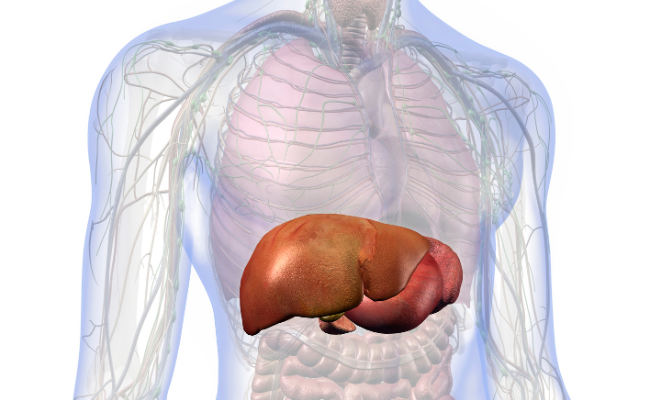How to Treat Gallbladder Pain?
- February 13, 2024
- No Comments

What is Gallbladder Pain?
Gallbladder pain, also known as biliary colic, is a common symptom of gallbladder disease. The gallbladder is a small organ located beneath the liver, and its primary function is to store bile produced by the liver. When the gallbladder becomes inflamed, obstructed, or infected, it can lead to pain in the upper abdomen, often on the right side, that may radiate to the back or shoulder blades.
Why is Gallbladder Pain a Concern?
Gallbladder pain can be a significant concern due to its intensity and impact on daily life. The pain can be severe and debilitating, making it difficult to perform routine activities and affecting overall quality of life. In addition to the pain itself, gallbladder issues can lead to complications such as gallstones, inflammation (cholecystitis), infection (cholecystitis), and even life-threatening conditions such as pancreatitis or bile duct obstruction if left untreated.
How to Treat Gallbladder Pain?
- Pain Management: Over-the-counter pain medications such as acetaminophen (Tylenol) or nonsteroidal anti-inflammatory drugs (NSAIDs) like ibuprofen (Advil, Motrin) can help alleviate mild to moderate gallbladder pain. However, it's essential to consult a healthcare professional before taking any medication, especially if you have underlying medical conditions or are taking other medications.
- Dietary Modifications: Making changes to your diet can help reduce gallbladder pain and prevent future episodes. Avoiding fatty, greasy, and spicy foods can help decrease the workload on the gallbladder and reduce the risk of triggering pain. Instead, focus on a diet rich in fruits, vegetables, whole grains, and lean proteins. Eating smaller, more frequent meals throughout the day rather than large meals can also help prevent gallbladder pain.
- Hydration: Drinking an adequate amount of water is essential for maintaining overall health and supporting gallbladder function. Staying hydrated can help prevent gallstones from forming and reduce the risk of gallbladder pain. Aim to drink at least eight glasses of water per day, and avoid sugary beverages and excessive caffeine, which can contribute to dehydration.
- Avoiding Trigger Foods: Certain foods and beverages can exacerbate gallbladder pain and trigger symptoms. These include high-fat foods, fried foods, spicy foods, dairy products, caffeine, alcohol, and carbonated beverages. Avoiding these trigger foods can help prevent gallbladder pain and improve overall digestive health.
- Weight Management: Maintaining a healthy weight is crucial for reducing the risk of gallbladder pain and complications. Obesity and excess weight can increase the likelihood of developing gallstones and other gallbladder issues. Adopting a balanced diet and engaging in regular physical activity can help achieve and maintain a healthy weight, reducing the risk of gallbladder pain and improving overall health.
Treatment Solutions for Gallbladder Pain:
- Medications: In addition to over-the-counter pain relievers, healthcare professionals may prescribe medications to manage gallbladder pain and related symptoms. These may include antispasmodic drugs to relax the muscles of the gallbladder and bile ducts, or medications to dissolve gallstones (ursodeoxycholic acid) or prevent their formation (chenodeoxycholic acid).
- Gallbladder Surgery: In cases of severe or recurrent gallbladder pain, surgery to remove the gallbladder (cholecystectomy) may be recommended. This procedure is usually performed laparoscopically and is considered safe and effective for relieving symptoms of gallbladder pain. After gallbladder removal, bile flows directly from the liver into the small intestine, bypassing the gallbladder.
- Endoscopic Procedures: In some cases, endoscopic procedures may be performed to remove gallstones or relieve bile duct obstruction. These procedures, such as endoscopic retrograde cholangiopancreatography (ERCP) or percutaneous transhepatic cholangiography (PTC), involve the insertion of a flexible tube (endoscope) through the mouth or abdomen to access and treat the bile ducts.
- Lifestyle Modifications: Adopting healthy lifestyle habits can help prevent gallbladder pain and reduce the risk of gallbladder disease. This includes maintaining a balanced diet, staying hydrated, achieving and maintaining a healthy weight, and avoiding smoking and excessive alcohol consumption.
Benefits of Treating Gallbladder Pain:
- Relief from Pain: Treating gallbladder pain effectively can provide relief from discomfort and improve overall quality of life. By managing symptoms and addressing underlying causes, individuals can experience reduced pain and discomfort associated with gallbladder issues.
- Prevention of Complications: Addressing gallbladder pain and underlying gallbladder disease can help prevent complications such as gallstones, inflammation, infection, and bile duct obstruction. Early intervention and treatment can reduce the risk of serious complications and improve long-term outcomes.
- Improved Digestive Health: Making dietary modifications and adopting healthy lifestyle habits as part of gallbladder pain treatment can promote better digestive health. Avoiding trigger foods, maintaining a balanced diet, and staying hydrated can support optimal gallbladder function and improve overall digestive function.
- Enhanced Quality of Life: By managing gallbladder pain effectively and preventing complications, individuals can enjoy an improved quality of life. Relief from pain, improved digestive health, and the ability to engage in daily activities without discomfort contribute to a better overall sense of well-being.
- Long-Term Health Benefits: Addressing gallbladder pain and gallbladder disease through treatment and lifestyle modifications can have long-term health benefits. By maintaining a healthy diet, weight, and lifestyle habits, individuals can reduce the risk of gallbladder issues and other related health conditions, promoting overall health and well-being.
Comments (0)